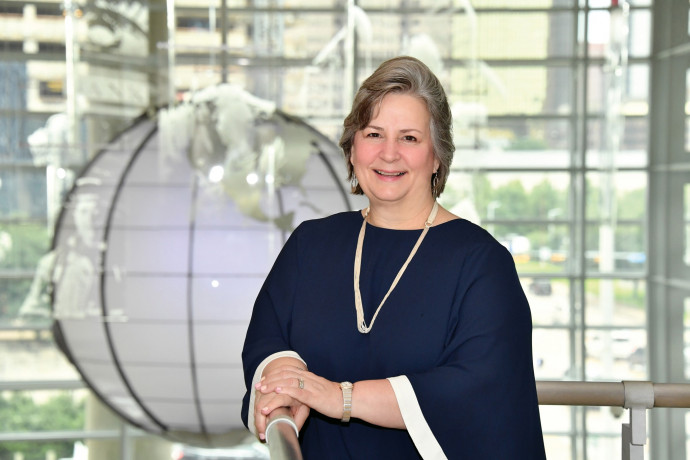Managing Operations at the Dallas Federal Reserve
Meredith Black BA ’84

Armored trucks drove down a ramp into the underground belly of the Federal Reserve Bank of San Francisco’s Portland branch. “The space was so tight the truck rolled onto a rotating platform, filled up with cash, swung around 180 degrees, and drove back out,” remembers Meredith Black, who was on a field trip from Aloha High School in 1980.
The memory of her field trip to the Fed stuck with her. Black was intrigued by the breadth of work she saw—from analytics to economic policy to materials handling. Over time, she continued to develop her natural affinity for numbers and majored in economics at Lewis & Clark. With an eye toward building a career in finance, Black joined the Federal Reserve Bank of Dallas in 1983. Now, 34 years later, she serves as the bank’s first vice president and chief operating officer, overseeing day-to-day operations.
“My job consists of a whole series of puzzles that need solving,” she says. “I love interacting with people who are excited and devoted to our mission.”
Congress created the Federal Reserve System in 1913. Its purpose is to provide the country with a safer, more flexible, and more stable monetary and financial system. Twelve independent regional banks, most with at least one branch, inform Washington about district or regional economic issues. “Immigration and trade are important in Texas,” she says. “Mexico is our biggest trading partner.”
Black says the Dallas Fed currently has three main priorities: to attract, develop, and retain talented employees; to help improve local communities; and to provide leadership in economic research. “We’re here to serve the American people. We’re self-sustaining and return all excess revenue to the U.S. Treasury to help retire the debt.”
Over the years, Black has seen many changes in focus and policy. Technology moved the Fed away from massive check processing to mainly electronic payments, a difficult task because jobs were lost and employees needed retraining. When economic crises led to passage of the Dodd-Frank Act in 2010, Fed banks were charged with regulating larger financial institutions—and subsequently grew in size themselves. “Now, we’re taking a second look at how the law may disproportionately impact smaller community banks,” she says.
Though finance is statistically considered a male-dominated field, Black has managed to thrive. The Fed, she says, is known for being blind to gender and race while advocating for diversity of thought. She doesn’t hesitate to use those facts when recruiting employees. “I’ve spent my whole career here—over three decades —because of the opportunities I’ve had to explore different parts of the bank.”
Black also extends a helping hand in the community she serves. For example, she mentors students in the Dallas Year Up program, open to low-income high school graduates or GED recipients. It combines skill development, college credit courses, and corporate internships. “We hope they have a successful year so we can place them with organizations like ours,” she says.
Black was the first in her family to go to college and has fond memories of her time at Lewis & Clark. As a native Texan whose family moved to Oregon in 1978, she bragged for years about taking snow skiing for PE credits.
“I took my first macroeconomics class with Professor Dale O’Bannon in Albany,” says Black. Back then, she never imagined herself in meetings with Janet Yellen, Ben Bernanke, and Alan Greenspan, current and former chairs of the Federal Reserve System Board of Governors in Washington, D.C. “Working at the Fed has been quite an honor.”
—by Pattie Pace
More L&C Magazine Stories
Lewis & Clark Magazine is located in McAfee on the Undergraduate Campus.
MSC: 19
email magazine@lclark.edu
voice 503-768-7970
fax 503-768-7969
The L&C Magazine staff welcomes letters and emails from readers about topics covered in the magazine. Correspondence must include your name and location and may be edited.
Lewis & Clark Magazine
Lewis & Clark
615 S. Palatine Hill Road MSC 19
Portland OR 97219

